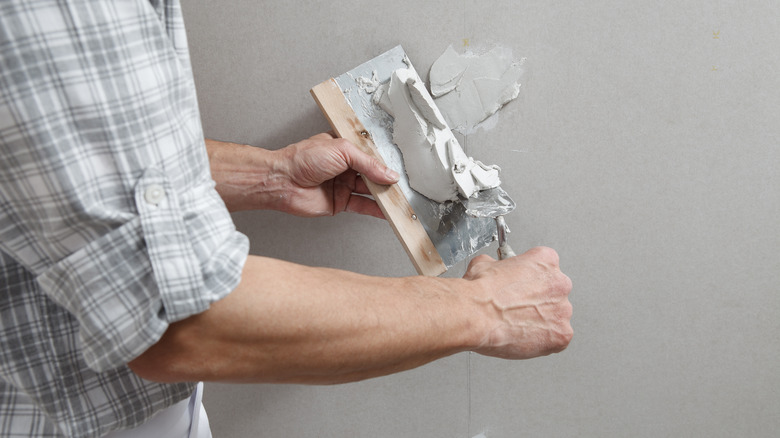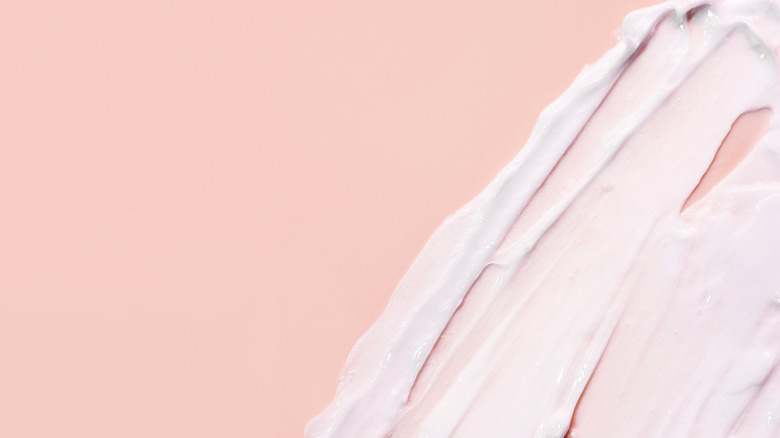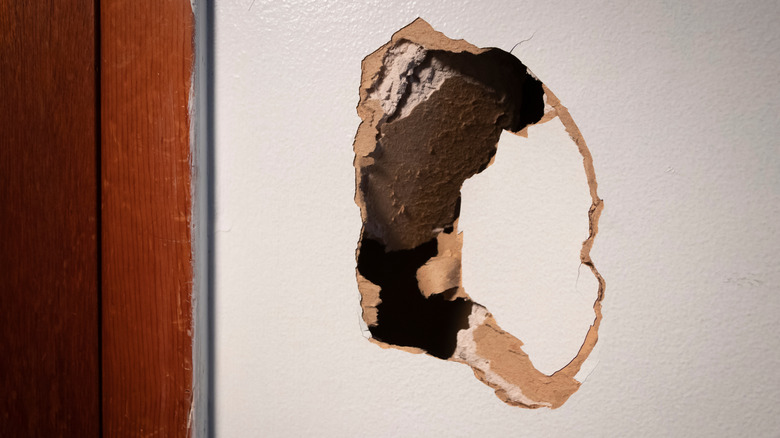The Best Method For Repairing A Hole In Your Wall
So, you have a hole in your wall; now what? You could hide it with a picture of your family or some other wall decoration, or you could fix it yourself. According to HomeAdvisor, hiring a professional to patch up an opening in your wall can cost anywhere from $60 to $100 an hour — and that's just the labor cost. The price to repair a small hole can fall between $50 to $300, and to repair a large puncture, you're looking at about $150 to $400 for professional help.
However, you can cut the expenses by more than half by repairing the hole yourself. The approximate price of materials will run you about $70, and you don't have to worry about any labor costs. For this DIY project, you'll need different materials based on the hole size, and the methods will also vary. Now, let's take a look at how to repair that unsightly hole in your wall.
For smaller holes
If you're fortunate enough to have only a small hole in your wall, you can fix it by using a product you already have in the house. You've probably heard of filling openings with toothpaste, and no, that's not a rumor — you really can use it in this case as well. Southern Living explains that toothpaste is comparable to spackle, making it a great alternative when fixing a puncture. Keep in mind that this method only works for very small holes, and you must use white toothpaste exclusively.
To repair the hole in your drywall, simply fill it by squeezing the toothpaste into it, then smoothing out the excess with a putty knife, kitchen knife, or any item with a straight edge. You can squeeze the toothpaste onto a toothpick if you're working with a very, very small hole, and for slightly larger holes, feel free to use a Q-tip instead, Snappy Living recommends.
For larger holes
If you're working with a larger hole, you will need more materials. To repair a bigger opening in your wall, this DIY project requires a scrap piece of drywall bigger than the hole, furring strips, joint tape, drywall screws, and toothpaste or better yet, joint compound. You may not be acquainted with furring strips — which are essentially thin strips made from metal or wood, according to H2ouse. Their purpose is to level the surface where you can affix flat materials (in this case, the scrap piece of drywall) when repairing a gaping hole in your wall, H2ouse explains.
Joint compound is basically a putty used to fill in the puncture. It's similar to spackle, but not entirely. ManMadeDIY explains the difference between the two substances is the size of the hole they're meant for. To patch the wall, trace the scrap piece over the hole and cut it out along the lines with a knife or a drywall saw. Next, attach the furring strips on each side of the hole with screws and place the drywall patch on the created surface. Finally, coat with the paste-like compound after attaching the joint tape to the hole's borders.


